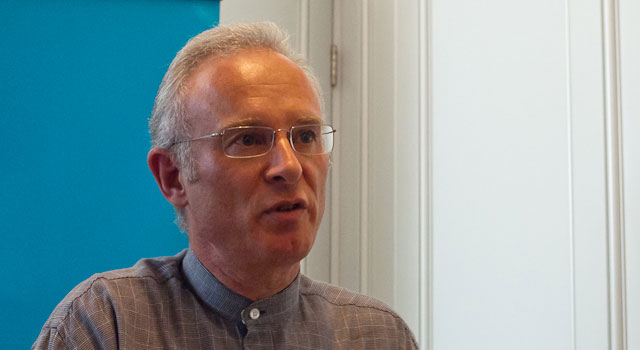
Fifty billion dollars was wiped off Apple’s valuation in after-market trading on Wednesday after it published first-quarter results that spooked investors, despite lifting sales by 18% to a record US$54,5bn.
The question on investors’ lips now is whether this marks the bottom of an aggressive sell-off in the company’s shares which began in mid-September 2012, when they peaked at above $700/share, or whether concerns about rising competition from Samsung Electronics and other rivals, coupled with the lack of a game-changing new product since the iPad was introduced nearly three years ago, mean the share will continue its slide.
Apple sold 47,8m iPhones in the most recent quarter, short of the 50m analysts had expected the company to ship. That still represented an increase over the 37m sold in the year-ago quarter. iPad sales were strong, at 22,9m units shipped against 15,4m previously. However, Mac sales fell to 4,1m from 5,2m a year ago. iPod sales also declined — to 12,7m from 15,4m previously.
Paul Theron, CEO of Johannesburg-based investment management firm Vestact, is an Apple bull and thinks the latest fall in the company’s share price represents a great buying opportunity.
“I remain very positive and am cheerful about being long on the stock,” Theron says. “We think Apple is in a great position and we believe [CEO] Tim Cook has put a hell of a lot of money into supply chain and manufacturing optimisation that people haven’t even really seen yet. Some people still think Apple is totally at the mercy of its suppliers, but I think that’s shifted a lot. And, of course, the overall valuation is very reasonable compared to what people are paying for other consumer-orientated companies.”
At Wednesday’s close, before the results were released, the company’s share price was trading at just 11,6 times trailing earnings — cheap for a fast-growing technology company. The historically slower-growing Microsoft, by way of comparison, has a p:e of 14,9. Even that lumbering giant IBM is trading at a higher multiple than Apple.
Theron concedes that Apple is playing in what he calls a “difficult sector” and that there have been high-flying companies in the past, with good prospects, that have come crashing back to earth completely against market expectations. “I’m not telling people that they must mortgage their houses and put it all in Apple. But we’re still long and happy to be so.”
He thinks this latest fall in Apple’s share price probably represents the end of the more than four-month long downtrend trend. “We’ve seen plenty of cases over the years where a high-profile momentum stock that’s done well tumbles hard when it’s quarterly or annual or half-year numbers are a bit spongy,” he says.
“That often is a good time to buy. Once some of the short sellers have come in looking for some downside momentum, once that stabilises, then the long-term institutional shareholders start to come in and often it can — in trader terminology — having gone down the elevator, start climbing back up the stairs.”
Arthur Goldstuck, MD of research firm World Wide Worx, also believes the recent correction in Apple’s share price has now been overdone, but warns that things are not nearly as rosy for the company as they were until recently.
“The most telling clue is the graph that shows Apple’s profit growth over the last few years, from when it started accelerating so crazily,” he says. “That graph is the perfect bell curve. In technology product circles, a bell curve is associated with a product lifecycle — a slow beginning, fast rise, flattening, and then a fast fall and a tapering off. When you see that shape appearing in a company like Apple’s profit figures, then you are starting to see the end of its pre-eminence as a market-dominating force.”

In addition, Goldstuck says, the rise of Google’s Android operating system — which he says is “massacring” Apple’s iOS — must also be a big concern. Korea’s Samsung Electronics has been hugely successful in taking the fight in the smartphone market to Apple with the Galaxy S3. “Samsung has produced a device where the general consensus — except for Time magazine and other flag-wavers for American products — is that it has not only caught up with Apple but has overtaken it.”
Even more significantly from a psychological point view, says Goldstuck, was Apple’s launch of the iPad mini. For some time, Apple insisted that it wouldn’t produce a smaller iPad and the fact that it did suggests it “capitulated to the idea of following the market as opposed to leading the market”.
“Despite effectively inventing the tablet market, Apple almost overnight gave up 40% of the market to smaller devices and that forced it to follow. It was really at that point that the backlash against Apple began, not because there was anything wrong with the device, but because of what it represented psychologically in terms of market leadership.”
The iPhone 5, released in September 2012, led to another “big shift in perception”.
“Apart from slavish Apple fans, the consensus has been that the iPhone 5 was a setback for Apple in terms of both innovation and market leadership,” Goldstuck says. “It doesn’t represent any serious market-changing innovation. It represents Apple falling behind what the broader market wants from cutting-edge smartphones.”
He believes the problem is that Apple has become “deeply complacent” because of its market leadership and the durability of previous innovations. “If you go back to the iPod, 10 years ago it initiated the current era of iProducts. The iPhone was built on the iPod framework and the iPad was built on the iPhone framework. You’re sitting with a technology framework and a broad conceptual architecture that is 10 years old.”
Goldstuck says Apple is clearly missing its former CEO and co-founder, the late Steve Jobs, especially his “unparalleled” ability to innovate and his “ruthless attention to the detail of his innovations”. — (c) 2013 NewsCentral Media
- Top image: GDS-Productions




